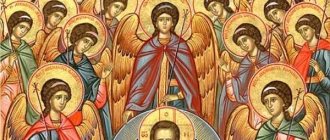Thanks to biblical traditions, the expression “good Samaritan”, which Jesus talks about in one of his parables, has entered our speech. Today, representatives of the Samaritan people number no more than 900 people, and almost all of them live in the city of Holon, which is located near Tel Aviv.
Christians all over the world identify Samaritans with kind and selfless people who are ready to help. It was the Samaritan who saved Christ, as the Bible tells us. But what do we know about the people themselves? How did they live before and what is the way of life of the Samaritans of our time?
Are the Samaritans Jews or not?
Samaritans belong to the Jewish subethnic group. They themselves believe that they come from the kingdom of Israel, being descendants of Joseph. The name of their original territory, Samaria, is associated with the reign of King Omri, who ruled the Kingdom of Israel. Subsequently, the historical area was destroyed by the Assyrians.
According to centuries-old principles, the Samaritans remain faithful to the traditions and faith of Israel. It is amazing that the Samaritans themselves consider themselves part of the Jewish ethnic group, but the Jews classify their people as the descendants of the Assyrians. The records of the historian Josephus indicate that the Samaritans even called themselves Sidonians, namely Phoenicians. From ancient times, many Israeli traditions were more pronounced among the Samaritans than among the Jews.
An ancient Torah scroll preserved by the Samaritans
Even today, this people's strict observance of Sabbath traditions surpasses Jewish customs. However, not all cultural characteristics of Jews are close to the Samaritans - only the most ancient ones. For example, Samaritan women do not celebrate Hanukkah, one of the main Jewish holidays.
They do not fast on the Day of Av, when, according to legend, the First and Second Temples of Jerusalem were destroyed. Most Samaritans reject the biblical prophets, believing that the Jews had only one teacher of the Word of God - Moshe Rabbeinu (Moses).
It is noteworthy that the most sacred place for the Samaritan people is not Jerusalem at all, but Mount Gerizim. It is called the Mountain of Blessings, because it was from here that Moses commanded his people to say words of prayer and blessing. After the conquest of Judea by Alexander the Great, the Samaritans built a temple on the sacred mountain, which, unfortunately, was destroyed just two centuries later.
Good Samaritan. Traditional depiction of the parable of the Good Samaritan.
Notes
- ↑ 1.01.1 Samaritans celebrated Passover on Mount Gerizim
- ↑ 2.02.1
- ↑ 3,03,13,23,33,43,5 Guardians of Mount Gerizim
- ↑ 4,04,14,24,3 Y. Magen The temple on Mount Gerizim
- Translation of the Torah on the Mahanaim website
- Samaritan meeting house excavated in Beit She'an
- Israeli archaeologists have found the 1,600-year-old manor of a wealthy Samaritan. Report from the Israel Antiquities Authority 03/18/2019
- זו סתם סוכה: פירות וסוכות בעדה השומרונית
- As the Jews used to do before entering the Temple, because it is said in the Torah: “Take off your sandals, for the place where you stand is holy ground...”
- [https://www.encyclopedia.com/topic/Samaritan.aspx#2 Samaritans Encyclopedia of the Modern Middle East and North Africa | 2004 | Tsedaka, Benyamim]
- Zakhar GELMAN Slavic beauty for the Great Cohen
Fight for freedom
The Roman administrative reform brought about difficult changes in the life of the people. Despite the fact that the Samaritans received the rights of autonomous residents on their lands, they were forced to recognize the pagan faith.
The destruction of the Second Temple of Jerusalem pushes the Samaritans to search for a home in foreign territories. Their communities appeared outside of Samaria, where the people could not profess the faith of their ancestors.
Particularly strong popular unrest began in the 5th-6th centuries. At this time, the Samaritans even managed to defend their rights and gain independence from Byzantium. This period was marked by the rule of local kings who received the support of the people. Alas, very soon the Samaritans were suppressed, and power again passed to foreigners.
The complex question of the origins of the Samaritans was also reflected in their relationship with the Jews. In 1993, when Israeli troops withdrew from Nablus, representatives of the Samaritan ethnic group demanded that a number of their regions receive the status of Israeli settlements, but the government refused.
Samaritan elders have worn the traditional red fez since Ottoman rule © Abraham Waldman / thetower.org
In my opinion, the reason lay in the possible negative political consequences that this step could provoke. Despite this, Samaritans are subject to the Law of Return because they have Israeli citizenship and can resettle in Israel if they wish.
“True Hebrew” – the language of the Samaritans
The pride of the Samaritans is their language. They believe that they speak exactly the Hebrew dialect that the ancient Jews knew.
The Samaritan elder Isaac Simchai spoke about this in the following way: “Unlike the majority of modern Jews, we Samaritans have never left the Land of Israel, in other words, the Promised Land, and therefore we cannot have any borrowings from foreign languages.” True, many Jews can argue with him on this score, but this is the eternal unity and rivalry of the two peoples.
However, the Bible states that the Assyrian ruler, wanting to help the Kuteans (Samaritans), expelled from their homeland, sent a Jewish priest to them, after which they converted to Judaism. If you believe biblical legends, the Jews were not expelled, but the Kuteans only joined their ethnic group.
The Samaritan canon is much smaller than the Hebrew canon and contains the first five books of the Hebrew Masoretic text from the Bible © Abraham Waldman / thetower.org
Samaritans
Archpriest Oleg Stenyaev about the Gospel teaching on the attitude towards non-believers.
The Bible's teaching about the Samaritans deserves our attention. The Samaritans are a classic sect that originated within Judaism. Christ perceived the Samaritans precisely as apostates from the true faith of Israel. Sending his disciples to preach, He told them: “...do not go into the way of the Gentiles, and do not enter the city of the Samaritans” (Matthew 10:5). Such reduction of the Samaritan heretics to the position of wicked pagans clearly characterizes the depth of their errors. In a conversation with a Samaritan woman, answering her question which of the two faiths is more consistent with the truth (Samaritanism or Judaism), the Lord declared with all certainty: “You do not know what you bow down to, but we know what we bow down to, for salvation is from the Jews”( John 4:22); here He identifies Himself, with the words “we know,” with the Old Testament faith and directly contrasts it with the errors of the Samaritans. In addition, the Samaritans themselves showed aggression towards the Son of God, seeing in him only an orthodox Jew. It is said: “But they did not receive Him there, because He appeared to be traveling to Jerusalem” (Luke 9:53). The last story deserves our special attention.
Healing lepers. Serbia, Kosovo. XIV century
The reluctance on the part of the Samaritans to accept Christ into their village, since “He had the appearance of traveling to Jerusalem,” ran into a sharp protest from the apostles James and John, these “sons of thunder” demanded that the fire be brought down on the heads of the Samaritan sectarians: “Lord! Do you want us to tell fire to come down from heaven and destroy them, just as Elijah did? But He, turning to them, rebuked them and said, “You do not know what kind of spirit you are” (Luke 9:54-55). Sometimes we Christians really forget what time we live in and what spirit we are driven by. The Orthodox “Explanatory Bible of Lopukhin” explains: “To the angry statement of the sons of Zebedee, whom the Lord Himself called the sons of thunder (Mark 3:17), who wanted, like Elijah the prophet, to bring down fire on the foolish Samaritans, the Lord replies that they do not understand, obviously , that, as disciples of Christ, already living in the New Testament, and not in the Old, like Elijah, they should not resort to those harsh measures of admonition that the prophets of the Old Testament resorted to. And Elijah also had the Spirit of God in him, but that Spirit was different, manifesting itself differently than the Spirit under whose influence the disciples of Christ are” (Explanatory Bible... Stockholm, 1987. Vol. 3).
The Lord did not leave the “sons of thunder” without instruction and admonished them with the following words: “The Son of Man came not to destroy the souls of men, but to save” (Luke 9:56). The Holy Fathers explain: “But the Lord, showing them that His Law is higher than the life of Elijah, forbids them and takes them away from such a way of thinking and, on the contrary, teaches them to endure insults with meekness” (Commentary of Blessed Theophylact on Luke 9:56).
The conversation of the Son of God with the Samaritan woman brought much greater results. It is said: “And many Samaritans from that city believed in Him because of the word of the woman, who testified that He told her everything that she had done. And therefore, when the Samaritans came to Him, they asked Him to stay with them; and He stayed there two days. And an even greater number believed because of His word” (John 4:39–41).
The well-known parable of the Good Samaritan (Luke 10:30–37) is nothing more than a parable about a good heretic and sectarian. This is exactly how it was perceived by the contemporaries of Jesus Christ. The Lord morally places the Samaritan sectarian above both the orthodox priest and the orthodox Levite. It was the good Samaritan who turned out to be a true neighbor for the victim of the robbers. Alas! But even in our time, many sectarians in a moral sense stand much higher than their theological opponents. Many of the accusations that some Orthodox religious scholars level against sectarians can be used to a greater extent against ourselves.
The Samaritans are presented in the Gospels as being more grateful to Christ. Of the ten lepers who were cleansed, only one returned to Christ “and fell on his face at His feet, giving thanks to Him; and it was a Samaritan” (Luke 17:16).
The Gospel teaching about the Samaritans is the Gospel teaching about Christ’s attitude towards sectarians (heretics). Without in any way conceding the primacy of faith to them, the Son of God, however, often sets them as an example to the faithful themselves and builds missionary work with them from the position of an attentive and even loving attitude towards them. Perhaps it is precisely because of such a morally verified system of relations with the Samaritans that for some Jews Christ Himself looks like a “Samaritan.” It is said: “...The Jews answered and said to Him: Are we not telling the truth that You are a Samaritan...” (John 8:48).
A missionary will only be successful in preaching when he tries, as far as possible, to identify himself with the object of the sermon. Christ did it completely. It is said: “He, being the image of God, did not consider it robbery to be equal with God; but he made himself of no reputation, taking the form of a servant, and being made in the likeness of men, and becoming in appearance like a man” (Phil. 2:6-7).
Only that sermon will be heard that takes into account all, even subjective, features of the object of the sermon. It is said: “For, being free from everyone, I made myself a slave to everyone, in order to gain more: to the Jews I became like a Jew, in order to gain the Jews; to those under the law he was as one under the law, in order to gain those under the law; for those who are strangers to the law - as one who is strangers to the law - not being alien to the law before God, but under the law of Christ - in order to win those who are strangers to the law; He was like one who is weak to the weak, so that he might gain the weak. I have become all things to all, that I may save at least some” (1 Cor. 9:19-22). For the sake of the work of the gospel, the Apostle Paul identified himself even with the Pharisees (these consistent enemies of Christ and Christianity); once the Apostle Paul wrote about himself: “circumcised on the eighth day, of the family of Israel, of the tribe of Benjamin, a Jew of the Hebrews, a Pharisee according to the teaching” (Phil. 3:5). It is difficult for us to fully understand the full extent of self-identification with the lost in the life of the Apostle Paul; sometimes this even reached the point of self-denial in Christ, when he (Paul) wrote: “I myself would like to be excommunicated from Christ for my brothers who are related to me according to the flesh...” (Rom. 9:3). In other words, he himself was ready to be in hell, just to know that his brothers, relatives in the flesh, were in heaven. And the Son of God Himself descended into hell, taking upon Himself the sins of the world, “and went down and preached to the spirits in prison” (1 Pet. 3:19). The ministry of preaching to the lost must always be of a sacrificial nature, as it was with Christ, as it was with the Apostle Paul, who said: “Therefore I urge you: imitate me, as I imitate Christ” (1 Cor. 4:16).
Parable of the Good Samaritan
According to the teaching of the apostles, “turn away from the heretic after the first and second admonition” (Titus 3:10). “After the first and second,” that is, it is necessary to use maximum effort. The apostles do not recommend showing excessive hostility towards those who have fallen away: “If anyone does not listen to our word in this epistle, take note of him and do not communicate with him in order to shame him. But do not consider him an enemy, but admonish him as a brother” (2 Thess. 3:14–15). The Apostle Paul also recommends showing mercy to those under disciplinary (canonical) prohibition: “For such a one, this punishment from many is enough, so it is better for you to forgive him and comfort him, so that he is not consumed by excessive sorrow. Therefore I ask you to show him love” (2 Cor. 2:6). Having previously delivered his body “...to Satan for the destruction of the flesh, so that the spirit might be saved in the day of our Lord Jesus Christ” (1 Cor. 5:5).
The general tone of religious interviews (even those of an accusatory nature) should not turn into rude forms: “Sanctify the Lord God in your hearts; Be always ready to give an answer to everyone who asks you a reason for the hope that is in you with meekness and fear” (1 Pet. 3:15). But such an outwardly gentle attitude towards heretics never in the apostolic teaching nevertheless exceeded the limits of what was permissible.
The Apostle of Love John the Theologian taught: “Whoever comes to you and does not bring this teaching, do not accept him into your home and do not welcome him. For he who welcomes him shares in his evil deeds” (2 John 1:10–11). The Apostle Jude called to abhor “...even clothing that has been defiled by the flesh” (Jude 1:23). Of course, this refers to scoffers, “walking after their own ungodly lusts” (Jude 1:18). But the entire strict tone of the message of the Apostle Jude did not avoid the reminder of mercy towards those who have fallen away: “And to some be merciful, with consideration...” (Jude 1:22).
Archpriest Oleg Stenyaev
Reference Samaritans are an ethnic-religious group, a classical sect within Judaism. This ethnic group arose from the mixing of the Jews who inhabited the Northern (Israel) kingdom with settlers from different regions of the Assyrian empire (2 Kings 17:24; 1 Ezra 4:9–10), who settled the deserted areas (after the expulsion of the Jews to Babylon ) city of Samaria. Initially, the Samaritans were ministered to by Jewish priests (Levites - 2 Kings 17:27), but later they created their own priesthood, an alternative to the Jewish one. The Samaritans also have their own (alternative) text of the Torah (the Pentateuch of Moses), known as the “Samaritan Pentateuch.” This text differs from the Masoretic (Hebrew) text of the first five books of the Bible. Thus, the name of Mount Ebal (Deut. 27:4) was replaced by Gerizim, etc. – only about 6 thousand mismatches. Samaritans annually celebrate Passover and other religious holidays established in the Book of Leviticus on Mount Gerizim.
Samaritans today
Today, the UNESCO organization lists the Samaritans as an endangered ethnic group, as evidenced by their small numbers. They are listed in the “Red Book” of tribes and nations. However, this “coin” also has a positive side - Samaritan youth can receive free education at the best Israeli universities.
Just a couple of decades ago, the Samaritans were considered a closed people, but today everything has changed dramatically. Many social and spiritual leaders marry representatives of other nations. Samaritan elders support such a departure from ancient traditions, believing that new blood will “rejuvenate” the people and, perhaps, give them times of revival.
Fire pits where sacrificial lambs will be cooked / © Abraham Waldman / thetower.org
The Samaritans are a small and mysterious people, bound by paradoxical contradictions with the Jews. Its representatives consider themselves part of the Jewish ethnic group, bearers of “true Hebrew,” but the Jews themselves do not support these ideas. Which one is right? It seems to me that there is no need to incite controversy, because each of these peoples has an ancient and very rich history.











